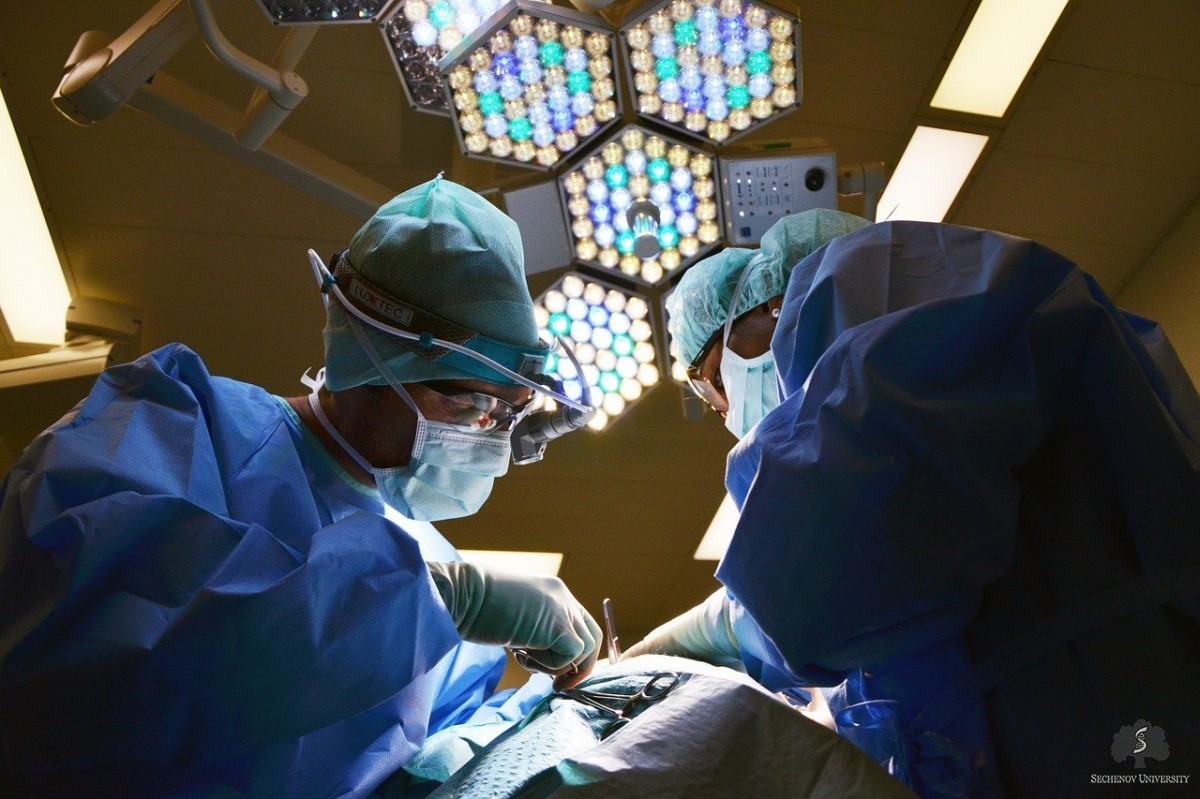-
About University
- Mission & Brand Strategy
- University Leadership
- Rector's Welcome
- History
- Regulatory Documents
- Contacts
- Staff
- International Recruitment
- Partners
Applicants- Why Sechenov University
- Degree Programmes in English
- Preparatory Courses
- Non-Degree Programmes
- Transfer from other Institutions
16.07.2020Facial plastic surgery may be more dangerous with age
 Sechenov medics discover the blood vessels too close to the skin and easy to wound.
Sechenov medics discover the blood vessels too close to the skin and easy to wound.
Aesthetic medicine often deals with the face — traumas and ageing are among the reasons why a lot of people need to use plastic or reconstructive surgery. Scientists from Sechenov University and their colleagues from the Mayo Clinic College of Medicine and Science and the University of Munich collaborated to determine risk factors that might arise from the spatial arrangement of the blood vessels in the nasolabial triangle zone. The researchers used multi-planar computed tomographic (CT) images from contrast agent enhanced cranial CT scans. The results have been recently published in the Aesthetic Surgery Journal.
The nasolabial triangle, also known as the “triangle of death”, is the area between the corners of the mouth and the bridge of the nose. It is one of the most challenging facial regions for plastic surgeons because of the dense network of blood vessels that are easy to wound and infect, hence the name. The nasolabial groove — the furrow between the wing of the nose and the lip — becomes more pronounced with age, and cosmetic procedures are often performed on this area, for example, injections of hyaluronic acid or other fillers. But the proximity of the blood vessels to the skin may be dangerous if not taken into account during manipulations.
The angular artery is an important part of the blood vessel network in the nasolabial triangle. The anatomy of the area is studied quite well, but not so much is known about how deep this artery is, and how its location varies with age, gender, and body mass index (BMI).
The analysis included 156 Caucasian patients aged 45.19 ± 18.7 years, with a mean BMI of 25.05 ± 4.9 kg/m2. The researchers found that in most cases there was just one arterial trunk in the area, and two or three trunks were discovered only in a few patients.
At the wing of the nose, the depth of the main arterial trunk was 13.7 ± 3.7 mm, whereas closer to the eye the depth was 1.02 ± 0.62 mm. When blood vessels are closer to the skin, it makes them more vulnerable during plastic surgery. The study also found that the depth of the artery varied, and it was located most superficially in the lip junction area.
It turned out that gender and BMI did not have an impact on the results, but the age did. In older patients, the artery depth and its distance from the nasolabial folds ('laugh lines') were much smaller. The authors of the study hope that this discovery will help plastic surgeons take special caution when injecting soft tissue fillers.
Photo Credit: Pixabay 650534Embed on website
Facial plastic surgery may be more dangerous with age
Sechenov medics discover the blood vessels too close to the skin and easy to wound.
Aesthetic medicine often deals with the face — traumas and ageing are among the reasons why a lot of people need to use plastic or reconstructive surgery. Scientists from Sechenov University and their colleagues from the Mayo Clinic College of Medicine and Science and the University of Munich collaborated to determine risk factors that might arise from the spatial arrangement of the blood vessels in the nasolabial triangle zone. The researchers used multi-planar computed tomographic (CT) images from contrast agent enhanced cranial CT scans. The results have been recently published in the Aesthetic Surgery Journal.
The nasolabial triangle, also known as the “triangle of death”, is the area between the corners of the mouth and the bridge of the nose. It is one of the most challenging facial regions for plastic surgeons because of the dense network of blood vessels that are easy to wound and infect, hence the name. The nasolabial groove — the furrow between the wing of the nose and the lip — becomes more pronounced with age, and cosmetic procedures are often performed on this area, for example, injections of hyaluronic acid or other fillers. But the proximity of the blood vessels to the skin may be dangerous if not taken into account during manipulations.
The angular artery is an important part of the blood vessel network in the nasolabial triangle. The anatomy of the area is studied quite well, but not so much is known about how deep this artery is, and how its location varies with age, gender, and body mass index (BMI).
The analysis included 156 Caucasian patients aged 45.19 ± 18.7 years, with a mean BMI of 25.05 ± 4.9 kg/m2. The researchers found that in most cases there was just one arterial trunk in the area, and two or three trunks were discovered only in a few patients.
At the wing of the nose, the depth of the main arterial trunk was 13.7 ± 3.7 mm, whereas closer to the eye the depth was 1.02 ± 0.62 mm. When blood vessels are closer to the skin, it makes them more vulnerable during plastic surgery. The study also found that the depth of the artery varied, and it was located most superficially in the lip junction area.
It turned out that gender and BMI did not have an impact on the results, but the age did. In older patients, the artery depth and its distance from the nasolabial folds ('laugh lines') were much smaller. The authors of the study hope that this discovery will help plastic surgeons take special caution when injecting soft tissue fillers.
Photo Credit: Pixabay 650534



